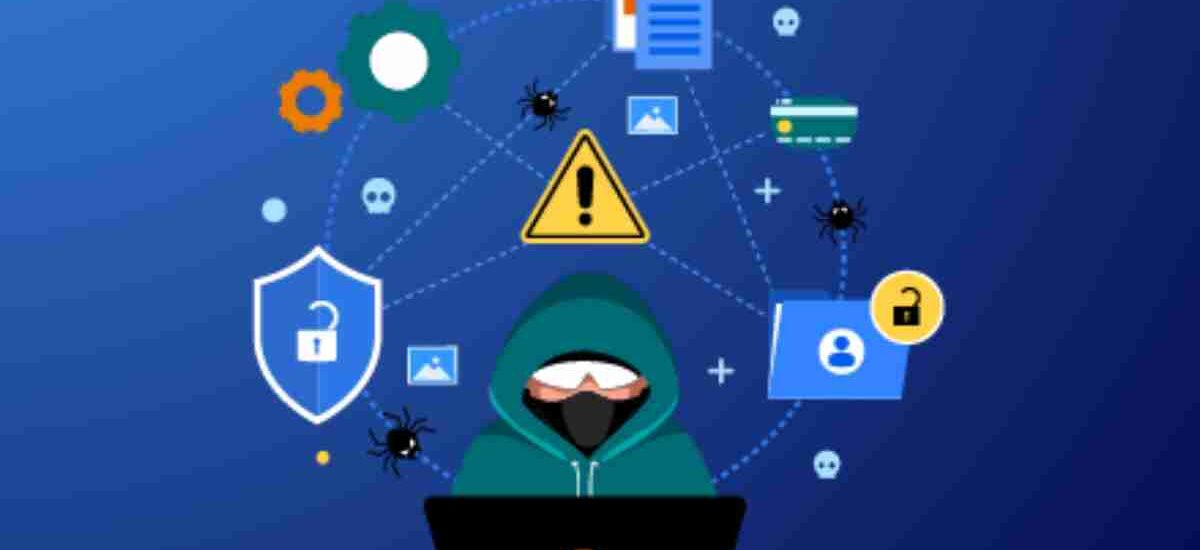Introduction
In today’s rapidly evolving digital world, web applications have become an essential part of our lives—powering businesses, entertainment, communication, and much more. But as their importance grows, so does the risk associated with security breaches. That’s where the OWASP Top 10 comes into play.
OWASP (Open Worldwide Application Security Project) is a nonprofit foundation that works to improve the security of software. Its flagship project, the OWASP Top 10, is a regularly-updated report outlining the ten most critical security risks to web applications. Understanding these vulnerabilities is crucial for developers, security professionals, and business owners alike.
In this blog, we’ll break down each of the OWASP Top Ten vulnerabilities, explain real-world examples, and share actionable tips to secure your applications.
1. Broken Access Control
Access control refers to the rules that limit what authenticated users can do. When access control is broken, users can act outside of their intended permissions.
Real-world Impact:
- Unauthorized viewing of sensitive files.
- Modifying other users’ accounts.
- Escalating privileges to an admin role.
Example:
A non-admin user accessing an administrative URL like /admin/dashboard without proper restrictions.
How to Protect:
- Implement role-based access control (RBAC).
- Deny by default—only allow access if explicitly permitted.
- Conduct regular access control audits and penetration testing.
2. Cryptographic Failures
This issue was previously known as “Sensitive Data Exposure” but was renamed to better describe the root cause: failing to properly protect data through encryption.
Real-world Impact:
- Password leaks.
- Credit card theft.
- Unauthorized access to confidential data.
Example:
Storing passwords in plaintext or using weak encryption algorithms like MD5.
How to Protect:
- Use strong encryption standards like AES-256.
- Implement HTTPS everywhere.
- Regularly rotate encryption keys.
3. Injection
Injection attacks happen when an attacker sends malicious data to an interpreter, tricking it into executing unintended commands or accessing unauthorized data.
Types of Injection:
- SQL Injection
- Command Injection
- LDAP Injection
Real-world Impact:
- Database breaches.
- Data loss or corruption.
- Server compromise.
Example:
Entering '; DROP TABLE users;-- into a login form to delete the users table.
How to Protect:
- Use parameterized queries or prepared statements.
- Sanitize and validate all user inputs.
- Employ ORM libraries when possible.
4. Insecure Design
An insecure design is a fundamental flaw in how an application is structured. It’s not about coding errors but poor decisions during the architecture and design phases.
Real-world Impact:
- Widespread security vulnerabilities across systems.
- Unscalable, insecure applications.
Example:
A banking app allowing password recovery via easily guessable security questions without secondary verification.
How to Protect:
- Adopt threat modeling early in the development lifecycle.
- Build security principles into your design.
- Conduct secure design reviews.
5. Security Misconfiguration
Misconfigurations can happen anywhere: web servers, databases, cloud services, or applications themselves. This is one of the most common vulnerabilities.
Real-world Impact:
- Exposed admin panels.
- Default credentials remaining unchanged.
- Information disclosure that helps attackers.
Example:
Leaving the default username/password (admin/admin) on a production database.
How to Protect:
- Harden all systems and applications.
- Disable unused features and services.
- Automate configuration management and regular security scans.
6. Vulnerable and Outdated Components
Using libraries, frameworks, and other components with known vulnerabilities can open your application to attacks.
Real-world Impact:
- Full application compromise via third-party code.
- Unpatched exploits leading to ransomware infections.
Example:
Running an outdated version of WordPress that is known to have security flaws.
How to Protect:
- Monitor and update all third-party dependencies.
- Subscribe to security advisories.
- Use tools like OWASP Dependency-Check.
7. Identification and Authentication Failures
Authentication is critical in protecting user accounts and systems. Poor implementations can lead to compromised credentials and unauthorized access.
Real-world Impact:
- Account takeover attacks.
- Brute-force password guessing.
- Session hijacking.
Example:
Not locking out an account after multiple failed login attempts.
How to Protect:
- Implement multi-factor authentication (MFA).
- Enforce strong password policies.
- Protect against credential stuffing using CAPTCHA or device fingerprinting.
8. Software and Data Integrity Failures
This risk involves relying on untrusted software, libraries, or pipelines without verifying their integrity, leading to unauthorized code execution or malicious updates.
Real-world Impact:
- Supply chain attacks (e.g., SolarWinds attack).
- Malicious updates impacting millions of users.
Example:
Downloading and using a library from an unverified third-party repository.
How to Protect:
- Use code-signing certificates.
- Ensure CI/CD pipelines are secure.
- Verify software integrity through checksums and hashes.
9. Security Logging and Monitoring Failures
Without proper logging and monitoring, breaches go unnoticed, and forensic investigations become difficult or impossible.
Real-world Impact:
- Delayed breach detection.
- Loss of sensitive customer data.
- Regulatory fines for non-compliance.
Example:
A web application fails to log failed login attempts, allowing an attacker to brute-force credentials unnoticed.
How to Protect:
- Centralize logging and monitor it actively.
- Set up alerts for suspicious activities.
- Retain logs securely for forensic investigations.
10. Server-Side Request Forgery (SSRF)
SSRF occurs when an attacker tricks a server into making requests to unintended locations, potentially exposing internal services.
Real-world Impact:
- Access to internal cloud metadata endpoints.
- Unauthorized information disclosure.
Example:
Submitting a crafted URL to an image-upload feature that forces the server to fetch internal network data.
How to Protect:
- Validate and sanitize all user-supplied URLs.
- Block server-side requests to internal resources (e.g.,
169.254.169.254for AWS). - Use allow-lists instead of block-lists for permitted destinations.
Why the OWASP Top Ten Matters
The OWASP Top Ten is more than a simple list; it represents a broad consensus about what the most critical security risks are today. Ignoring these risks could expose your applications to devastating attacks, legal issues, and a loss of user trust.
Whether you are a developer, a security professional, a business owner, or a student learning cybersecurity, familiarizing yourself with the OWASP Top Ten should be one of your highest priorities.
Best Practices for Securing Your Applications
- Shift Security Left: Integrate security early into the Software Development Life Cycle (SDLC).
- Regular Security Training: Keep your development and operations teams informed.
- Automated Testing: Use tools like static application security testing (SAST) and dynamic application security testing (DAST).
- Threat Modeling: Continuously assess risks during development.
- Zero Trust Principles: Never assume that internal or external traffic is safe by default.
Conclusion
Security is not a one-time project—it’s a continuous process. By understanding and addressing the OWASP Top 10 vulnerabilities, you can dramatically reduce the risk of your applications being compromised.
Remember: Prevention is cheaper than remediation. Building secure applications from the start saves you not only from financial loss but also from the far-reaching consequences of reputational damage.
Stay vigilant, keep learning, and prioritize security in every stage of your software development journey.
Frequently Asked Questions (FAQs)
What is OWASP?
OWASP stands for the Open Worldwide Application Security Project, a nonprofit focused on improving software security.
How often is the OWASP Top Ten updated?
Typically, OWASP updates the Top Ten list every 3 to 4 years to reflect changes in the cybersecurity landscape.
Who should care about the OWASP Top Ten?
Developers, security engineers, project managers, business owners, and anyone involved in creating or managing software applications.
How can I stay up-to-date on OWASP?
You can visit the official OWASP website or subscribe to their newsletters and community forums.



